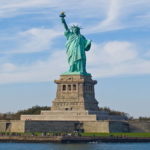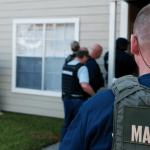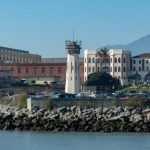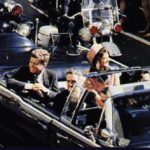 Technology
Technology  Technology
Technology  Humans
Humans 10 Everyday Human Behaviors That Are Actually Survival Instincts
 Animals
Animals 10 Animals That Humiliated and Harmed Historical Leaders
 History
History 10 Most Influential Protests in Modern History
 Creepy
Creepy 10 More Representations of Death from Myth, Legend, and Folktale
 Technology
Technology 10 Scientific Breakthroughs of 2025 That’ll Change Everything
 Our World
Our World 10 Ways Icelandic Culture Makes Other Countries Look Boring
 Misconceptions
Misconceptions 10 Common Misconceptions About the Victorian Era
 Mysteries
Mysteries 10 Strange Unexplained Mysteries of 2025
 Miscellaneous
Miscellaneous 10 of History’s Most Bell-Ringing Finishing Moves
 Technology
Technology Top 10 Everyday Tech Buzzwords That Hide a Darker Past
 Humans
Humans 10 Everyday Human Behaviors That Are Actually Survival Instincts
 Animals
Animals 10 Animals That Humiliated and Harmed Historical Leaders
Who's Behind Listverse?

Jamie Frater
Head Editor
Jamie founded Listverse due to an insatiable desire to share fascinating, obscure, and bizarre facts. He has been a guest speaker on numerous national radio and television stations and is a five time published author.
More About Us History
History 10 Most Influential Protests in Modern History
 Creepy
Creepy 10 More Representations of Death from Myth, Legend, and Folktale
 Technology
Technology 10 Scientific Breakthroughs of 2025 That’ll Change Everything
 Our World
Our World 10 Ways Icelandic Culture Makes Other Countries Look Boring
 Misconceptions
Misconceptions 10 Common Misconceptions About the Victorian Era
 Mysteries
Mysteries 10 Strange Unexplained Mysteries of 2025
 Miscellaneous
Miscellaneous 10 of History’s Most Bell-Ringing Finishing Moves
Ten Tales from the Last U.S. Ship Sunk in World War II
On July 30, 1945, the USS Indianapolis became the last major American ship sunk in World War II. Not only was its sinking by a Japanese submarine incredibly unfortunate timing—Japan surrendered less than two weeks later, following the dropping of two atomic bombs—the disaster stands as the greatest loss of life from a single ship in U.S. Navy history. Of the Indianapolis’s 1,195-member crew, only 316 ultimately survived.
However, far more remarkable is the nearly four horrific days most of the ship’s crew spent in the open Pacific Ocean, desperately waiting to be found. Here are ten tales from WWII’s final American tragedy.
Related: 10 Shipwrecks That Are Still Unexplained
10 Precious Cargo
Fortunately for countless American soldiers, the Indianapolis was on the final leg of its intended journey when it was sunk, rather than its first or second.
In July 1945, the Indianapolis found itself somewhere it hadn’t been in some time: America. Damaged by a Japanese fighter plane that spring, the ship had returned to San Francisco’s Hunter Point Naval Shipyard for repairs. The Indianapolis was ready to return to the fight my mid-July; unbeknownst to nearly everyone aboard, something else was ready as well.
When the Indianapolis departed San Francisco on July 16, several giant wooden crates went with her, with orders to deliver them to the naval base at Tinian, a U.S.-occupied island. Their contents were understandably top secret: inside were uranium and components for the first-ever atomic bombs.
With strict orders not to divert course for any reason, the Indianapolis proceeded to break a speed record, reaching Pearl Harbor, Hawaii, in just 74½ hours. It continued to Tinian, arriving on July 26. Its covert cargo delivered, the ship went on to Guam, where many crew were relieved and replaced by other sailors.
Soon, the Indianapolis set course for the Philippines. It never made it. Had the ship been sunk prior to arriving in Tinian, the atomic bomb would have been delayed, and the U.S. may have had to invade mainland Japan—a prospect projected to incur hundreds of thousands of American casualties.[1]
9 Straight to Its Death
Thirty-three years before the USS Indianapolis went down, another enormous ship was lost at sea—due largely to hubris. In April 1912, Edward Smith, captain of the supposedly unsinkable Titanic cruiseliner, received warnings of icebergs along the ship’s route. Nevertheless, he ordered the ship to continue at or near full speed. (Spoiler alert: the ship sank, and Jack died.)
Fast-forward to the waning days of World War II, and the USS Indianapolis was en route to the U.S.-occupied Philippines. Throughout the war, battleships were advised to navigate in a zigzag motion to avoid enemy submarines. However, on that fateful night of July 29, Caption Charles McVay III led the Indianapolis in a straight, beeline trajectory. Intelligence reports stated that the waters were clear of Japanese submarines.
The reports were wrong. At 12:15 am on July 30, the Japanese submarine 1-58 struck the unsuspecting ship with two torpedoes to the bow and midship, respectively. The direct hits were so devastating that the enormous warship rolled completely over just 12 minutes later, leaving virtually no time for lifeboats to be deployed. About 300 of the Indianapolis’s crew—including an unknown number killed by the initial torpedo impacts—went down with the ship.
Unlike Smith, though, McVay did not perish along with his ship. As we’ll see later, however, he’d pay a steep and arguably unfair price for what happened that night.[2]
8 “Like Hell”: The Immediate Aftermath
When a ship the size of the Indianapolis sinks, it does so over an elongated area. Survivors were scattered over a mile-plus of the ocean, with disbursement exacerbated by something quickly accumulating around the sinking site: slick, saturating oil.
Seaman First Class Lyle Umenhoffer, who we’ll hear from again later, recalls his “first instinct [was] to get away from it… because if it catches on fire, then you are really in trouble.” Umenhoffer started swimming aimlessly to find an oil-free patch of water. “This was a little after midnight when it happened… by probably about 5 or 6 o’clock in the morning, I was still swimming. I didn’t have anything. I didn’t even have a life jacket.”
Most survivors were relieved when dawn broke—but not for long.
“It was very miserable because of the sun burning the skin; one could not escape it,” said Signalman Third Class Paul McGinnis. “It was like having your head in a hole in the middle of a mirror, with all this sunlight being reflected and burning your face. So hot, it was miserable—like hell.” By noon on the first day, McGinnis and his group couldn’t wait for the sun to go down, darkness be damned. Of course, the entire thing was a double-edged, razor-sharp sword. “When the sun went down, it was a relief,” McGinnis remembers. “Then it would get cold, and you would start to shiver, and you couldn’t wait for the sun to come back up.”[3]
7 A Different Type of Sea Sickness
As the ordeal dragged on, the soaked yet sunbaked survivors faced cascading obstacles to remaining alive. The most tragically ironic of these threats was the prospect of dying of thirst despite being surrounded by water as far as the eye could see.
Many desperate sailors disregarded repeated warnings not to ingest the inviting but incapacitating water all around them. Drinking salt water is exceptionally dangerous; not only does the salt override the water, exacerbating thirst, but symptoms can quickly snowball into nausea, muscle weakness, and, most worrisomely, delirium.
For the already spent survivors of the Indianapolis – many of whom sustained injuries during the ship’s sinking—hallucinations set in with frightening rapidity. Some had fantastical visions of rescue ships or land on the horizon, prompting them to do the worst imaginable thing: separate from their comrades.
“A lot of them would swim away from the group because they were drinking the water and they were going crazy and they said, ‘I see a ship out there,’” said Seaman First Class Lyle Umenhoffer. “And they would take their life jackets off and start swimming out away from the group.”
Many would soon succumb to exhaustion and drown. Some would attack their fellow seamen, claiming they were Japanese spies. Per Umenhoffer, still others suffered an even more horrific fate.[4]
6 Jaws, Part 1: Feasting on the Dead
In addition to being the last major American ship sunk in the deadliest war ever, the USS Indianapolis holds another tragic distinction: It fomented the deadliest shark attack in recorded history.
The scene presented a perfect storm for sharks, most prominently oceanic whitetip and tiger sharks—two large, lethal apex predators. Exploding torpedoes, the massive disturbance of the sinking battleship, and the thrashing of the wounded drew the first ferocious fish to the scene. As blood circulated in the water, dozens more joined the fray.
Initially, the hunters focused on the easiest prey: the floating dead. Of course, this released even more blood into the water, drawing ever more sharks to the pockets of survivors huddled together over a mile or so. The luckiest were in the few lifeboats deployed prior to the ship’s demise; the worst off were bobbing with a few comrades with nothing more than a lifejacket.
Many survivors later admitted they were hoping for the wounded in their groups to pass away. For one, these men tended to scream and thrash more than the uninjured; in addition to blood, sharks can sense movement and pressure changes in water from hundreds of yards away. More importantly, though, the living knew their best chance to stay off the menu was to feed the dead to the sharks, buying more time for rescuers to arrive.[5]
5 Jaws, Part 2: Eaten Alive
Eventually, the diminishing number of bodies and surging number of sharks meant the inevitable: The predators turned their attention to the living. “You would hear a bloodcurdling scream and look and see someone going under,” said Edgar Harrell, a Marine who was 20 at the time.
While no exact figure exists, an estimated 150 of the approximately 900 sailors who survived the initial sinking were killed by sharks. That means a stomach-turning one in six men who survived the sinking fell prey to sharks. So awe-inspiringly awful was the ordeal that it received a foreboding monologue in a movie synonymous with shark attacks: the 1975 blockbuster Jaws.
Loel Dean Cox, then 19, described the sharks toying with and terrorizing his small group. “They would come up and bump you,” he said. “I was bumped a few times… In that clear water, you could see the sharks circling. Then every now and then, like lightning, one would come straight up and take a sailor and take him straight down. One came up and took the sailor next to me.”
Perhaps the cruelest shark-related death was the final one: With the survivors discovered and rescue boats en route, planes dropped water and liferafts. One pilot saw a man eaten alive as he swam toward the supplies a plane had just dropped.[6]
4 Murder and Madness on the Open Sea
All of this—sharks and saltwater ingestion, alternating between sunbaked and shivering, thirst and hunger—drove men past their breaking point.
One issue was the combination of delirium and weaponry. According to Machinist’s Mate Second Class Granville Crane, “a lot of them had weapons like knives, and they’d be so crazy that they’d be fighting amongst themselves and killing one another.” In addition to claiming to see rescue ships on the horizon, others had even more deranged declarations. Crane continues: “They’d say, ‘The Indy is down below, and they’re giving out fresh water and food in the galley!’ And they’d swim down, and a shark would get them. And you could see the sharks eating your comrade.”
The extremely limited number of liferafts, combined with a desperate need to escape the shark-infested open water, led to further conflict. Exhausted, bobbing men, many of them wounded, were kept afloat by lifejackets or floating debris. When they spotted others packed into liferafts, the inevitable occurred. Those in the water stormed the liferafts, only to be beaten back by the men on them, who feared the rocking or extra weight would capsize, the only thing separating them from becoming shark food.
This macabre hierarchy played out for nearly four days, with saving oneself often meaning sacrificing one or more fellow soldiers.[7]
3 Overlooked and on Their Own
How on Earth could it take four days to find survivors of an enormous sunken battleship? Simple: nobody was looking for them.
Command posts on Guam—the Indianapolis’s last known point of origin—and the Philippines, its destination, kept plotting boards intended to track the positions of vessels in their jurisdictions. Unfortunately, the system put in place was rudimentary even for the first half of the 20th century.
For starters, there wasn’t a check-in process, which would have updated the ship’s position and confirmed it hadn’t been attacked or sunk. Instead, command centers simply assumed ships as large as the Indianapolis would arrive at destinations reasonably on time, meaning their exact locations mid-journey were based solely on predictions. Not exactly military precision, folks.
So on July 31, when the Indianapolis should have arrived in the Philippines, the command center in Guam simply erased her from the board. In the Philippines, the ship’s failure to arrive as planned was noticed by operations officer Lieutenant Stuart B. Gibson. Bafflingly and inexcusably, Gibson didn’t investigate the unexplained absence, nor did he report it to superiors—a grievous error for which he was subsequently reprimanded.
This idiocy, combined with the aforementioned received-yet-unheeded SOS signals from the Indianapolis before it sank, meant that nobody with the ability to initiate a rescue operation knew the ship was missing in action. The massive screwup prompted the Navy to incorporate a proper Movement Report System.[8]
2 Finally Found
The egregious error of failing to report the Indianapolis missing left the sailors’ salvation to luck. That good fortune came the morning of August 2—three and a half days after the sinking.
At 10:25 am that day, a PV-1 Ventura bomber piloted by Lieutenants Wilbur Gwinn and Warren Colwell spotted a patch of men floating in the open Pacific. Nearby, a PBY-2 Catalina seaplane spotted a separate set of survivors. Both aircraft were on routine patrol missions. The bomber dropped a liferaft and radioed for help; all planes in the vicinity were ordered to the scene immediately to drop liferafts and supplies prior to rescue by ship.
Unfortunately, the airdrops were too imprecise and the men too weak to have much of an effect. Noticing this, Lieutenant Commander Robert Adrian Marks decided to land his seaplane despite opposing orders. After gaining the consent of his crew, Marks landed the craft amid 12-foot (3.7-meter) swells. More than 50 survivors gathered in and around the craft, some strapped to the wings with parachute cord.
Unsurprisingly, Marks’s plane was rendered unflyable despite accomplishing the more urgent mission of getting as many men out of the open water as possible. After nightfall, a destroyer escort called the USS Cecil J. Doyle was the first of seven rescue ships to arrive and start pulling the remainder of the 316 survivors to safety.[9]
1 Exonerated, Three Decades Too Late
As noted, the Indianapolis was sunk while traveling along a straight route rather than the zigzag pattern recommended for avoiding enemy submarines. After impact, the ship sank in just 12 minutes.
Initially, Captain Charles McVay thought the ship was salvageable. Despite a crew member tasked with damage control recommending the Indianapolis be abandoned almost immediately following the torpedo strikes, McVay refused, instead opting to radio distress signals. Soon, though, the ship’s ever-worsening list made McVay reconsider, and the abandon ship order was given.
About 900 men abandoned the Indianapolis. Only 316 survived—McVay among them. After the war, he vociferously demanded to know why it took four days to rescue his men. Later, declassified documents revealed that three SOS signals were received. One receiving commander was drunk, another thought it was a Japanese ruse, and a third had given orders not to be disturbed. Nice job, guys.
For his troubles, McVay was… court-martialed. He was charged with failing to zigzag and give order abandon ship orders in a timely manner; he was convicted of the former, becoming the only caption of the nearly 400 U.S. ships lost in combat during the war to suffer such an indignity.
Incredibly, McVay was exonerated in 2001 after a 12-year-old researching a school history project interviewed 150 survivors and reviewed some 800 documents. Unfortunately, the name-clearing came 33 years too late for the disgraced and devastated captain, who committed suicide on November 6, 1968.[10]








